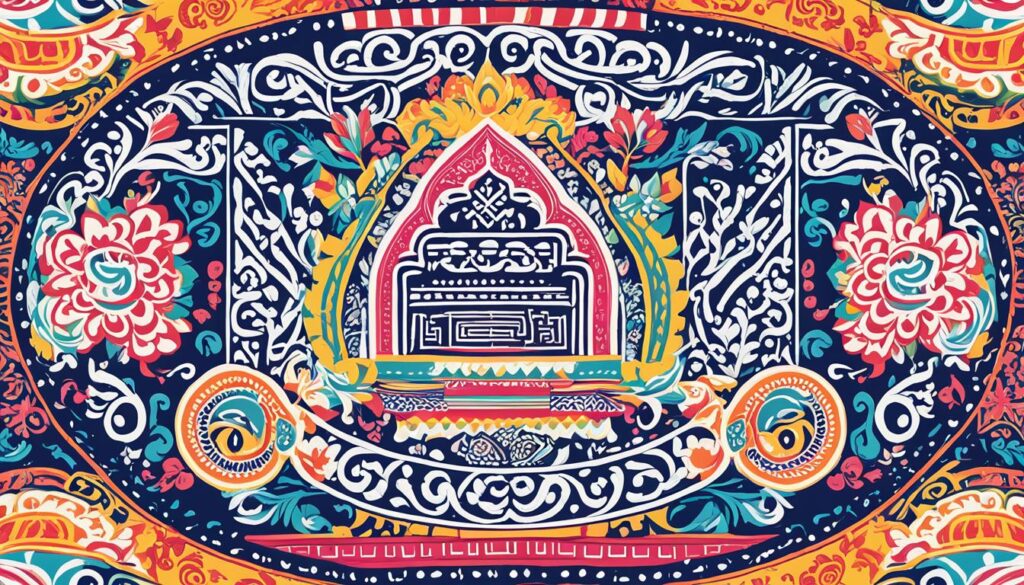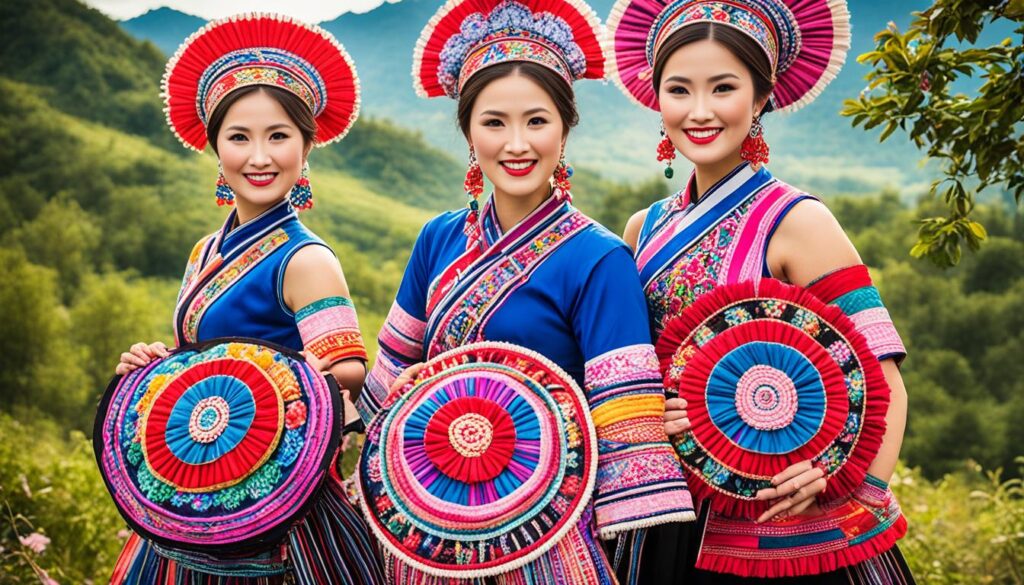Did you know that the Hmong language, spoken by the Hmong people in China, Vietnam, Laos, Myanmar, and Thailand, is a tonal language with seven to eight tones? This fascinating language, related to languages spoken in Mongolia, Southeastern Europe, and Turkey, is rich in nuances and unique characteristics that make it a captivating subject of study. From its short, one-syllable words to its tonal complexities, the Hmong language offers a glimpse into the vibrant culture and heritage of the Hmong people.
Hmong Language Family
The Hmong language belongs to the Hmong–Mien language family. This language family includes the Hmongic branch, to which the Hmong language belongs. More specifically, the Hmong language is classified as a Core Hmongic language within the West Hmongic branch. Within the West Hmongic branch, there is a subgroup known as the Chuanqiandian cluster. This cluster consists of various Hmong dialects spoken in China, Laos, and Vietnam.
The Hmong–Mien Language Family
The Hmong language is part of the Hmong–Mien language family. This language family is a group of languages spoken in Southeast Asia and southern China. It is also known as the Miao–Yao language family. The Hmongic branch, to which the Hmong language belongs, is one of the main branches of the Hmong–Mien family. It is characterized by its tonal nature and distinct linguistic features.
“The Hmong language is a unique member of the Hmong–Mien language family, with its own set of dialects and characteristics.”
Core Hmongic and West Hmongic
Within the Hmongic branch, the Hmong language is classified as a Core Hmongic language. This means that it represents the core or central variety of the Hmongic branch. The West Hmongic branch, to which the Hmong language belongs, is one of the major branches of the Hmongic branch. It encompasses various Hmong dialects spoken in different regions.
- Core Hmongic
- West Hmongic
- Chuanqiandian cluster
- Dialects spoken in China, Laos, and Vietnam
- Other dialects in West Hmongic
- Chuanqiandian cluster
- Other branches in Core Hmongic
- West Hmongic
- Other branches in Hmongic
Hmong Language Varieties
The Hmong language, spoken by the Hmong people, exhibits a rich diversity of dialects and varieties. Let’s explore some of the notable varieties of the Hmong language:
- Hmong Daw (White Hmong): This variety is one of the most widely spoken Hmong dialects. It is predominantly used by the Hmong community living in Laos and Thailand. Hmong Daw is characterized by its distinct pronunciation and vocabulary.
- Mong Leng (Blue/Green Hmong): Mong Leng is another prominent Hmong dialect spoken primarily in Laos. It is known for its unique intonation patterns and subtle differences in vocabulary compared to other varieties.
- Northern Qiandong Miaohma: This variety of the Hmong language is spoken in the northern regions of China. It features distinct phonetic nuances and differs from other Hmong dialects in terms of vocabulary and grammar.
- Southern Mashan Hmong: Southern Mashan Hmong is spoken in Vietnam’s mountainous regions, particularly in the Mashan area. It possesses its own set of pronunciation patterns and vocabulary, contributing to its uniqueness among Hmong dialects.
- Hmong Shua (Sinicized Miao): Hmong Shua is a Hmong dialect that has been influenced by Chinese culture and language, hence the term “Sinicized Miao.” It is primarily spoken by the Hmong population residing in Guizhou, Hunan, and Guangxi provinces of China.
While these varieties may exhibit slight differences in pronunciation, vocabulary, and grammar, they are largely mutually intelligible among Hmong speakers. This linguistic diversity reflects the rich tapestry of the Hmong culture and highlights the significance of language within the community.
| Variety | Location | Distinct Features |
|---|---|---|
| Hmong Daw | Laos, Thailand | Distinct pronunciation and vocabulary |
| Mong Leng | Laos | Unique intonation patterns, subtle vocabulary differences |
| Northern Qiandong Miaohma | China | Distinct phonetic nuances, differing vocabulary and grammar |
| Southern Mashan Hmong | Vietnam | Unique pronunciation patterns and vocabulary |
| Hmong Shua | China | Influenced by Chinese culture and language |
Through their distinct linguistic varieties, the Hmong people celebrate their diverse heritage and reinforce their cultural identity.

Hmong Language Varieties in Focus:
“The Hmong language showcases an incredible diversity of dialects. From Hmong Daw to Southern Mashan Hmong, each variety paints a vivid picture of the cultural richness and linguistic nuances within the Hmong community.” – Linguistics expert
Hmong Language in Thailand
In Thailand, the Hmong language is spoken by the Hmong people residing in the northern regions. While an exact number of Hmong language speakers in Thailand is not available, the Hmong community has actively preserved their language and culture.
For those interested in learning the Hmong language in Thailand, there are various resources available. Online courses and dictionaries specifically cater to individuals seeking to explore and develop their proficiency in the Hmong language.
By embracing these resources, individuals can engage with the Hmong language, fostering a deeper understanding and appreciation of the rich linguistic heritage preserved by the Hmong community in Thailand.
Importance of Hmong Language Preservation
The Hmong language holds a significant role in preserving the cultural heritage and identity of the Hmong people. It goes beyond being just a means of communication, as it serves as a gateway to preserving traditions, history, and the values that have been passed down through generations.
By preserving the Hmong language, we ensure that the unique customs, stories, and wisdom of the Hmong community continue to thrive. It allows us to maintain a strong connection to our roots and reinforces our sense of belonging and pride in our cultural identity.
Language is more than just words; it is a vessel that carries the essence of a people’s history and their way of life. Through the preservation of the Hmong language, we honor the sacrifices and resilience of our ancestors who have shaped our community and its values.
“Language is the road map of a culture. It tells you where its people come from and where they are going.” – Rita Mae Brown
In a world that is becoming more interconnected, the preservation of the Hmong language allows us to maintain a distinct cultural identity amidst globalization. It ensures that future generations have the opportunity to connect with their Hmong roots and to understand and appreciate the rich history and heritage of our community.
Additionally, the Hmong language fosters a sense of unity and solidarity within the Hmong community. It provides a platform for communication, cultural exchange, and collective engagement. By actively preserving and promoting the Hmong language, we strengthen the ties that bind us and empower our community to thrive in a multicultural society.
| Benefits of Hmong Language Preservation |
|---|
| Preservation of cultural heritage |
| Maintaining traditions, history, and values |
| Strengthening cultural identity and pride |
| Enhancing intergenerational connectivity |
| Fostering unity and solidarity within the Hmong community |

Learning Hmong Language Online
With the advancement of technology, learning the Hmong language online has become more accessible and convenient. There are various online courses and resources available that provide comprehensive lessons, vocabulary, grammar, and pronunciation guides. Whether you’re a beginner or an advanced learner, these resources cater to individuals of all ages who are interested in learning the Hmong language.
Online Hmong language courses offer structured lessons that cover essential topics such as greetings, numbers, colors, family, and daily conversational phrases. These courses are designed to help learners develop their language skills progressively. Through interactive exercises, quizzes, and audio recordings, you can practice your listening, speaking, reading, and writing skills at your own pace.
Learning the Hmong language online allows you to immerse yourself in the language regardless of your location. It’s an excellent opportunity for Hmong diaspora communities and individuals interested in connecting with their Hmong roots.
In addition to online courses, there are also various Hmong language resources available on the internet. These resources include online dictionaries, grammar guides, and pronunciation resources. They can be accessed anytime and anywhere, making it convenient for learners to study and practice the Hmong language.
Benefits of learning Hmong language online:
- Flexible learning schedule: You can learn at your own pace and set a schedule that fits your lifestyle.
- Accessible from anywhere: You can access online courses and resources from the comfort of your home or wherever you have an internet connection.
- Interactive learning materials: Online courses provide interactive exercises, multimedia content, and quizzes to enhance your learning experience.
- Community support: Some online courses offer forums or discussion boards where learners can interact with fellow students and instructors.
Whether you’re a beginner learning the basics or an advanced learner looking to improve your fluency, learning the Hmong language online offers a convenient and effective way to develop your language skills. Start your journey today and discover the beauty of the Hmong language!
Conclusion
The Hmong language holds great significance in the Hmong culture and heritage. Preserving and promoting this language is vital for the preservation of the Hmong people’s rich traditions and unique identity. Efforts are being made to ensure that the Hmong language remains alive and vibrant.
Fortunately, with the rise of technology, learning the Hmong language has become more accessible than ever before. Online resources have made it easier for individuals to connect with their Hmong roots and gain a deeper understanding of the Hmong culture. These resources provide convenient access to language courses, dictionaries, and other learning tools.
By preserving the Hmong language, we not only maintain a crucial aspect of the Hmong people’s cultural heritage but also uphold the values, stories, and wisdom passed down through generations. The Hmong language serves as a powerful thread that connects the past, present, and future of the Hmong community, strengthening their sense of belonging and pride.
